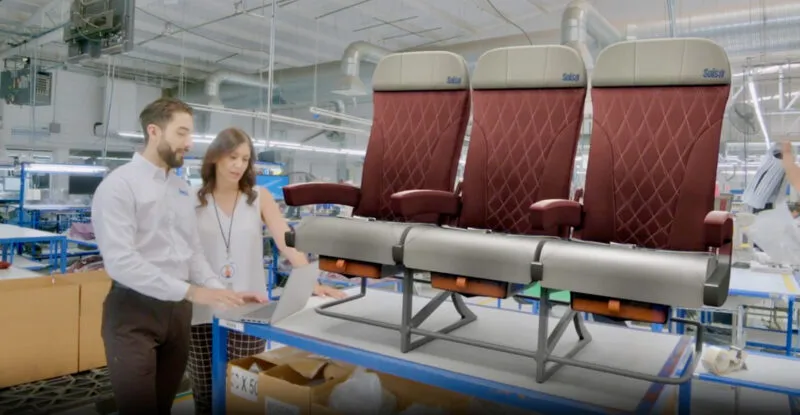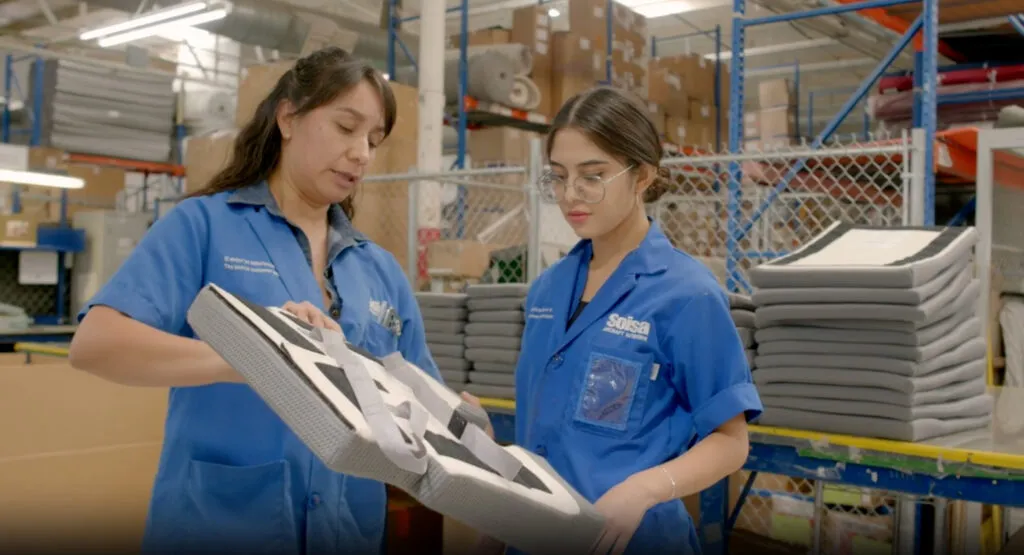Soisa Aircraft Interiors specialises in designing, engineering, manufacturing, and certifying a range of aircraft interior products including seat covers, cushions, composite panels, and upholstery; and in providing seat assembly services. Now, the family-owned company has adopted an ambitious five-year expansion plan that will, among other things, see Soisa bolster its share of direct work with airlines, CEO Jacobo Mesta reveals to Runway Girl Network.
Let’s take a look at Soisa’s current business activities. Founded in 2006, the firm is an AS9100-certified aircraft interiors specialist headquartered in Chihuahua, Mexico, with a distribution facility in the United States and a newly opened facility in Dubai. Known for investing in its local community, Soisa’s business comprises several key areas. Dress covers and cushions form the backbone of its operations, accounting for roughly 60% of total sales, says Mesta. Soisa also dedicates around 5% of its efforts to curtains and carpets.
Additionally, the firm’s computer numerical control (CNC) equipment plays a crucial role, particularly in foam routing, making up roughly 15% of the business, notes the CEO. The process allows Soisa to craft custom foam inserts tailored to the unique requirements of various aircraft seats and aviation clients.
A more recent venture involves the CNC machining of composite panels and subassemblies. Established in 2023, this Soisa unit has seen remarkable growth and “now contributes to around 20% of Soisa’s overall sales”, Mesta reveals.
Whilst the majority of Soisa’s workload — approximately 60% — is presently driven by major seat OEMs, such as Collins, Safran, Recaro and Jamco, some 20% constitutes direct work with airlines and another 10% is from maintenance, repair, and overhaul (MRO) companies and leasing firms. But airlines are increasingly opting to work directly with suppliers, for example through Direct Shipment Authorizations (DSAs).
“With DSAs, the OEMs grant us permission to provide the airline with the OEM part number while allowing us to engage directly with the airline. This approach has recently gained traction and is becoming a prevailing practice in our industry,” explains Mesta. In line with this trend, Soisa aims to grow its business “fivefold” by 2028, he says, with a balanced distribution of sales, targeting 50% for OEMs and 50% for direct sales to airlines.
“Currently, we provide materials for linefit, which involves supplying brand-new aircraft components to both OEMs and airlines. Simultaneously, we offer refurbishment services directly to the airlines. It’s important to note that our current operations primarily revolve around new materials, driven by the specific bill of materials provided by our customers. This approach aligns with the industry’s stringent standards and our commitment to quality.”

Soisa’s assembly methods are designed to not only save time but also reduce costs for its OEM clients. By delivering ready-to-install, fully assembled components such as aircraft seat armrests “we simplify the supply chain management and enhance the overall efficiency of the assembly process,” says Mesta. Image: Soisa Aircraft Interiors
Going forward, Soisa will further stretch its wings in the aircraft interiors world. “[T]here’s substantial growth potential within the upholstery market,” notes Mesta. “However, we are also actively directing our efforts towards expanding into composite and plastic assembly. Many interior cabin components are composed of composite or plastic materials. We’ve already made great strides in this direction, and we’re confident in our capabilities.”
Focused on sustainable operations, Soisa has embraced nearshoring, the practice of moving business activities to a nearby country or close to the end market, ergo reducing costs and inefficiencies. “We are excited about Mexican nearshoring opportunities for the USA market,” says Mesta. “This approach allows us to provide efficient and cost-effective solutions in the field of composite and plastic assembly, aligning us well with the needs of the aerospace industry.”
Soisa’s decision to establish a presence in Dubai is also part of its broader nearshoring plans. “We recognized the importance of being closer to our Middle East clients, such as Etihad, Emirates, and flydubai. This move provides them with the advantage of reducing transportation costs and receiving their final products more efficiently,” explains Mesta.
“Furthermore, our Dubai facility offers us a strategic advantage in reaching not only Middle Eastern clients but also those in Europe, North Africa, and Southeast Asia. As an example, just this month, we had the opportunity to deliver to Royal Brunei from our Dubai location. In fact, in November, we are planning to expand our operations in Dubai to accommodate the growing demand, particularly for manufacturing dress covers.
“This expansion highlights the ever-increasing opportunities and our commitment to serving clients across different regions around the world.”
Related Articles:
- With artisanal interior reuse partnership, Soisa focuses on ESG
- Latitude Aero rapidly expands to support nose to tail refurbishment
- How SIMONA is embracing sustainability at every rung of its business
- Tapping into real and “perceived” value with seat covers
- Nature and sustainability inspire ReWILDing collection from Muirhead
- ZIM CEO talks next steps as seatmaker acquires HAECO Cabin Solutions
- Quick-turn, low-customisation seat shipsets gain momentum
All images credited to Soisa Aircraft Interiors













